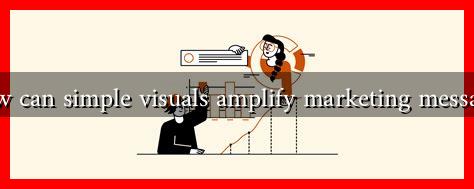-
Table of Contents
How Can Simple Visuals Amplify Marketing Messages?
In the fast-paced world of digital marketing, capturing the attention of potential customers is more challenging than ever. With an overwhelming amount of information available online, marketers must find innovative ways to communicate their messages effectively. One of the most powerful tools at their disposal is the use of simple visuals. This article explores how simple visuals can amplify marketing messages, supported by research, examples, and case studies.
The Power of Visual Communication
Visual communication is a critical aspect of marketing that leverages images, graphics, and videos to convey messages. According to a study by 3M, visuals are processed 60,000 times faster than text by the human brain. This statistic underscores the importance of incorporating visuals into marketing strategies. Here are some key reasons why visuals are so effective:
- Enhanced Retention: People remember 80% of what they see and do, compared to just 20% of what they read.
- Increased Engagement: Posts with visuals receive 94% more views than those without.
- Improved Understanding: Visuals can simplify complex information, making it easier for audiences to grasp key concepts.
Types of Simple Visuals That Amplify Marketing Messages
Marketers can utilize various types of simple visuals to enhance their messaging. Here are some effective options:
- Infographics: These combine data and visuals to tell a story. For example, an infographic detailing the benefits of a product can quickly convey essential information in an engaging format.
- Social Media Graphics: Eye-catching images or quotes shared on platforms like Instagram or Facebook can increase shares and likes, expanding reach.
- Videos: Short, informative videos can explain products or services in a concise manner, often leading to higher conversion rates.
- Memes: Humorous and relatable memes can resonate with audiences, making brands more approachable and shareable.
Case Studies: Success Stories of Visual Marketing
Several brands have successfully utilized simple visuals to amplify their marketing messages. Here are a few notable examples:
- Dropbox: When Dropbox launched, they used a simple explainer video that illustrated how their service worked. This video contributed to a 10% increase in sign-ups, demonstrating the effectiveness of visual storytelling.
- Airbnb: Airbnb’s use of high-quality images in their listings has been pivotal in attracting users. Their visuals not only showcase properties but also evoke emotions, leading to increased bookings.
- Buffer: Buffer, a social media management tool, frequently uses infographics to share insights about social media trends. This strategy has helped them establish authority in their niche and grow their audience.
Statistics That Highlight the Impact of Visuals
To further emphasize the importance of visuals in marketing, consider the following statistics:
- Content with relevant images gets 94% more views than content without images.
- Visual content is 40 times more likely to be shared on social media than other types of content.
- According to HubSpot, 54% of consumers want to see more video content from brands they support.
Best Practices for Using Visuals in Marketing
To maximize the impact of visuals in marketing, consider the following best practices:
- Keep It Simple: Avoid cluttered designs. Simple visuals are often more effective in conveying messages.
- Be Consistent: Use a consistent color palette and style across all visuals to strengthen brand identity.
- Optimize for Platforms: Tailor visuals for specific platforms to ensure they resonate with the target audience.
- Test and Analyze: Use A/B testing to determine which visuals perform best and adjust strategies accordingly.
Conclusion
In conclusion, simple visuals play a crucial role in amplifying marketing messages. By enhancing retention, increasing engagement, and simplifying complex information, visuals can significantly improve the effectiveness of marketing strategies. Brands like Dropbox, Airbnb, and Buffer have demonstrated the power of visuals in their campaigns, leading to increased engagement and conversions. By following best practices and leveraging the right types of visuals, marketers can create compelling messages that resonate with their audiences. As the digital landscape continues to evolve, the importance of visual communication will only grow, making it an essential component of any successful marketing strategy.
For more insights on visual marketing, check out HubSpot’s Marketing Statistics.

